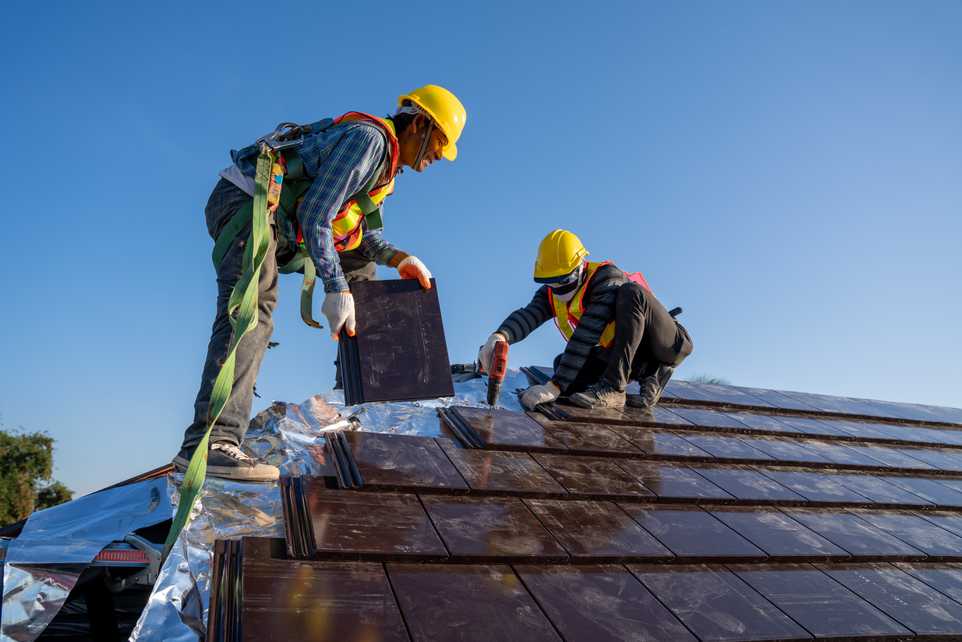Winters can be challenging for everyone and everything around you, and being the homeowner, you have to take all the measures to make sure that nothing goes out of place and that everything is working fine. The same goes for the exterior of your house, and because it contributes a lot to the home‘s curb appeal, you must take good care of it. Since winter is just around the corner, it is therefore expected of your roof to bear heavy rains, hail storms, snowfall, and scorching cold all the time.
So, the best thing to do is to get your roof prepared for it all to withstand the weather and extreme conditions all the time.
If you go through a few essential tips to care for the roof of your house in the winter, you can add years to the life of your roof and help maintain it in good condition. For this purpose, here we have gathered some tips to help you learn how to take the best care of your roof and get the best out of it.
Knowing when it’s the right time to change your roof is essential to prevent costly damage to your home’s interior and structure. Several signs can indicate that it’s time to replace your roof:
- Age of the Roof: The age of your roof is a crucial factor. Most shelters have a lifespan of 20-30 years, depending on the materials used. If your roof is approaching or has exceeded its expected lifespan, it’s an excellent time to consider replacement, even if it looks okay.
- Visible Damage: Inspect your roof for signs of damage, such as missing or cracked shingles, curling or buckling shingles, or damaged flashing around chimneys, vents, and skylights. These issues can lead to water leaks and should be addressed promptly.
- Leaks and Water Damage: If you notice water stains on your ceiling or walls or experience roof leaks, it clearly indicates that your roof is compromised and needs attention.
- Mold or Mildew Growth: The mold or mildew on your roof or attic can indicate roof damage, poor ventilation, or leaks. Addressing these issues may require roof replacement.
- Excessive Granule Loss: Check your gutters for an excessive buildup of granules from asphalt shingles. Shingles losing granules can indicate advanced wear and the need for replacement.
- Sagging or Drooping Roof: A sagging or drooping roof is a severe structural issue and an obvious sign of roof failure. Immediate replacement is necessary to prevent further damage.

- Higher Energy Bills: An old or damaged roof can lead to poor insulation and increased heating and cooling costs. If you notice a sudden spike in energy bills, it could be due to an inefficient roof.
- Visible Sunlight in Attic: If you can see sunlight coming through your attic’s roof boards, it means gaps or holes in your roof need repair or replacement.
- Rotting or Decaying Roof: If you have a wooden roof, check for rot or decay in the wood. Soft or crumbling wood is a sign that the roof structure is compromised.
- Persistent Algae or Moss Growth: Algae and moss can damage shingles and trap moisture, leading to deterioration. If cleaning doesn’t resolve the issue, it might be time for a new roof.
- Widespread Shingle Granule Accumulation: If you find shingle granules accumulating in your gutters and downspouts, it may indicate that your roof is near the end of its lifespan.
- Neighborhood Roof Replacements: If many homes in your neighborhood have their roofs replaced due to age or damage, it’s a sign that your roof might be in a similar condition.
- Unplanned Repairs: Frequent and costly roof repairs can add up over time. If you repeatedly address roof issues, investing in a new roof may be more cost-effective.
It’s important to conduct regular roof inspections and address issues promptly to prevent further damage. If you notice any of these signs or are uncertain about the condition of your roof, it’s advisable to consult with a professional O’Fallon Roofing Contractor. They can assess the roof’s condition and provide recommendations for repair or replacement based on your specific circumstances.








